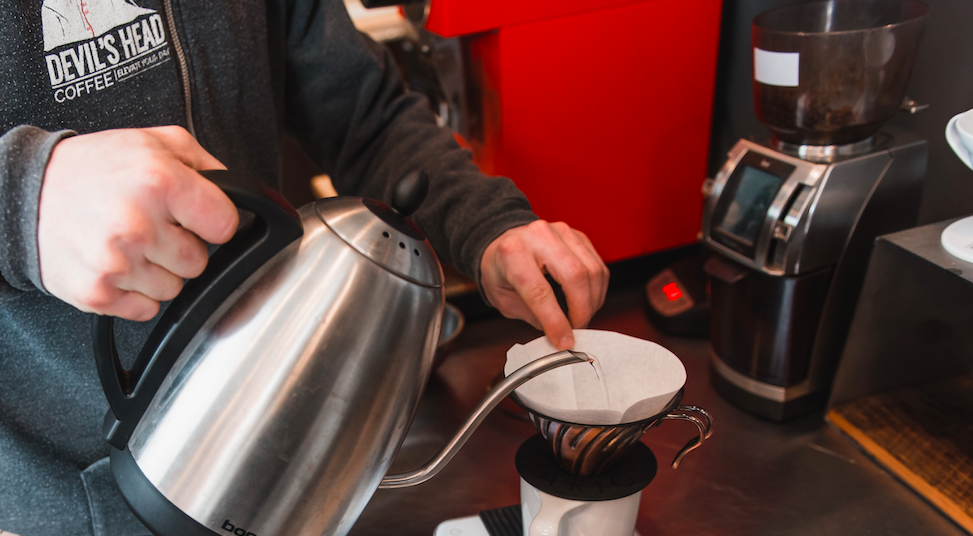
Water, it’s coffee’s other half, or actually it’s coffee’s main ‘ingredient’ being the only other thing used to activate all the wonderful tastes, aromas, and frankly make it drinkable. Water is a pretty important factor in the wonderful world of coffee, so much so that even the type of water used can have a pretty significant impact on the taste of your brew!
Cow-Town Water Woes
It’s no surprise that filtered and tap are the most commonly used for brewing coffee, mainly due to convenience. Calgary’s water specifically is definitely safe, but “is considered hard because of the amount of calcium and magnesium in the water” and with limescale buildup, you’ll be familiar with that high concentration of limestone. Our water also goes through varying degrees of chlorine treatments and the mix of these factors makes the water really hard on coffee equipment and on the brewing process. This isn’t to say ‘hard’ water is the end of good coffee, some hardness is necessary for the mineral benefits, the primary impact would come from the chlorine in water treatment which can ‘bleach’ out any sweetness or complexity, leaving a bit of a bitter cup of coffee.
If you’re finding the taste of your water is making it into that cup of coffee, or just for curiosity sake, a place you can start is with a bottle of mineral water brewed side by side a tap water brewed coffee and analyze the smell and taste. According the Specialty Coffee Association, their standard for water should be free of odour, and to their definition, clean and clear without the signs of chlorine. With a few more pH and alkaline related details, there is a particular water standard, but starting there is good enough for home brewing!
Filter Methods
The simplest method would be to use a filter with active carbon, also known as your handy dandy Brita filter. For home use, this won’t produce the perfect brewing water, but it does a great job in removing tastes you might not want hanging around in your brew.
Water softeners could work against having really hard water on your equipment, but the downside would be the loss of a good amount of the magnesium in the water that actually works great for brewing. This is another personal choice, so if you use a water softener, try hard and soft back to back in a brew and see where your preference sits!
Reverse osmosis is another method that can be used, which essentially removes the water of any minerals. Similarly to water softener, the water is clear, odourless, and free of chlorine, so all good for those basic starting standards. Beyond that there is a combo of dissolved solids that is actually great to have in your water, so if that RO system is capable of blending or if it is mixed with tap water, it’ll get pretty close to balancing out the nothing with some mineral content.
Something that is quite exciting (and can get quite nerdy) is using Third Wave Water. This was created specifically for coffee brewing and when added to distilled water or RO water, there’s the ultimate mineral balance to pull just the right flavour from your brew. A similar process would be adding .75 grams of epsom salt and .26 grams of baking soda to distilled water and wabam, you’ve ‘made‘ water!
That being said, I return back to the base of everything which is it comes down to you. These are avenues you can investigate if that primo bag o’ beans you’ve come to dial in and aim to enjoy just isn’t cutting it or for the pure case of curiosity! It can be fun to play around with what impacts flavour.
Connect
Instagram: @devils_head_coffee
Facebook: @Devil’s Head Coffee
Email: [email protected]
